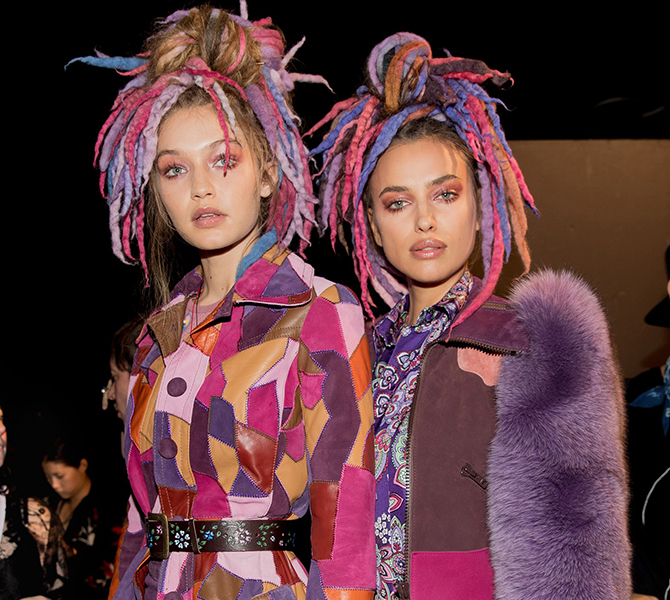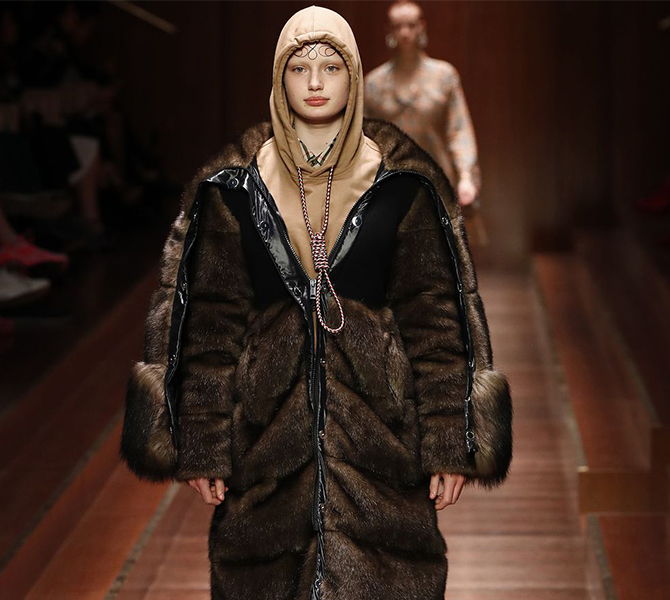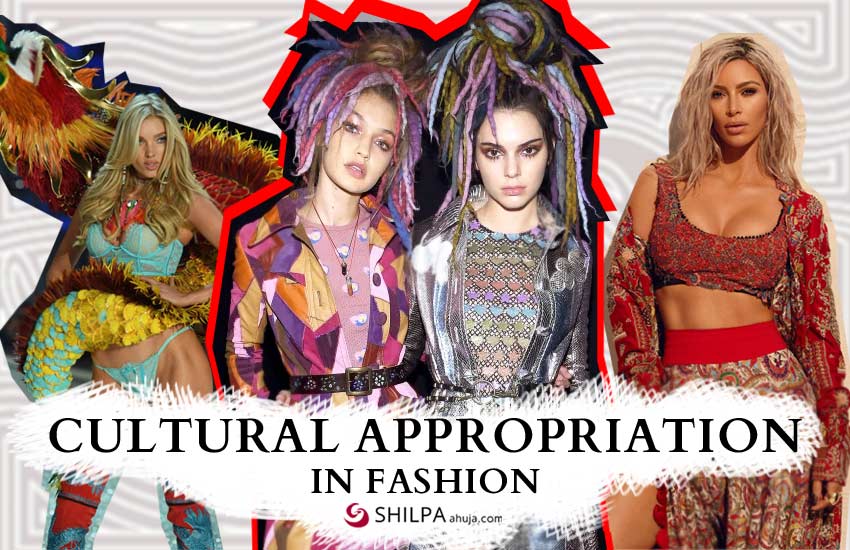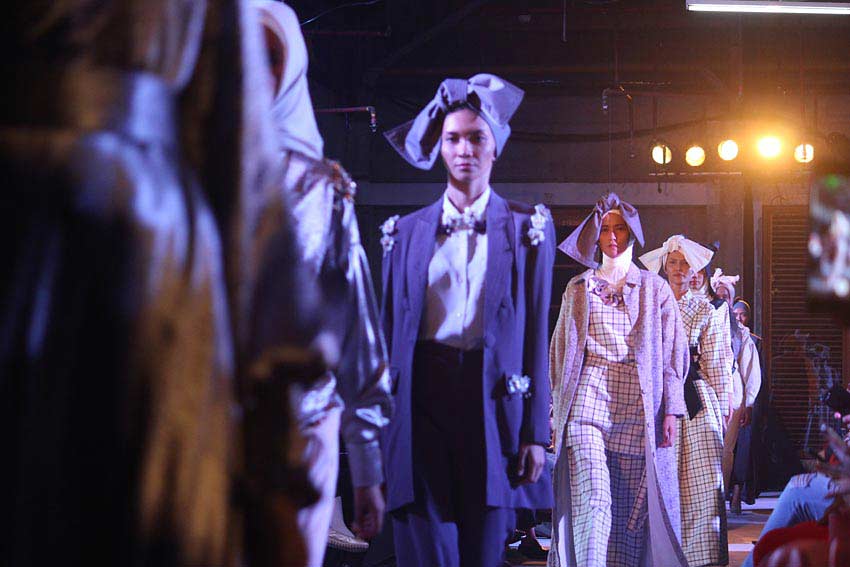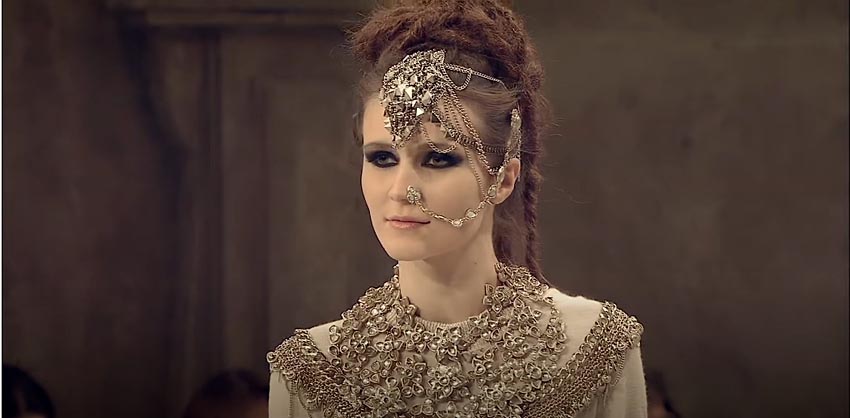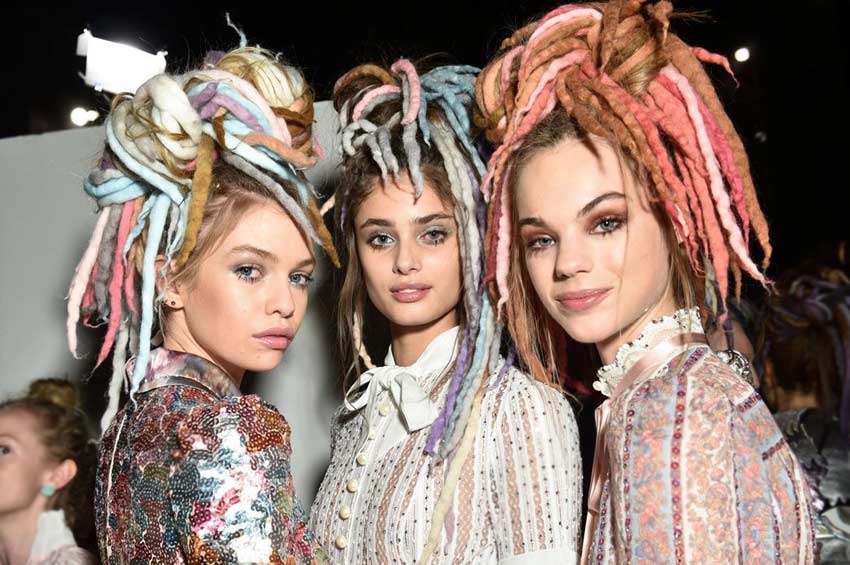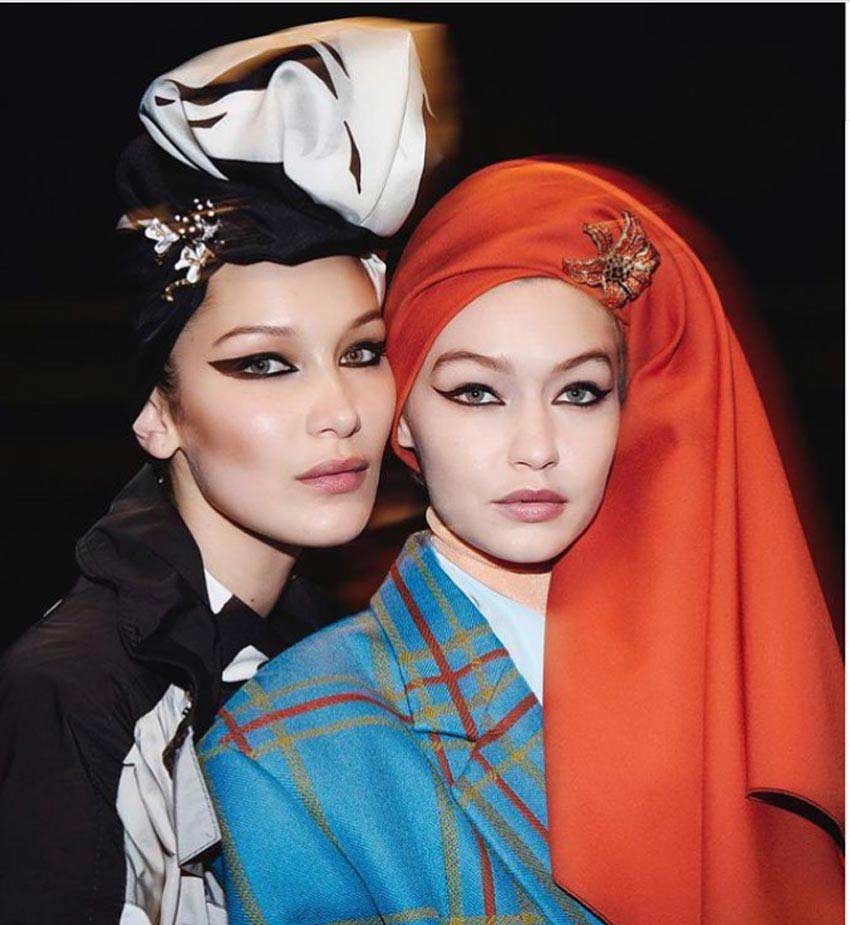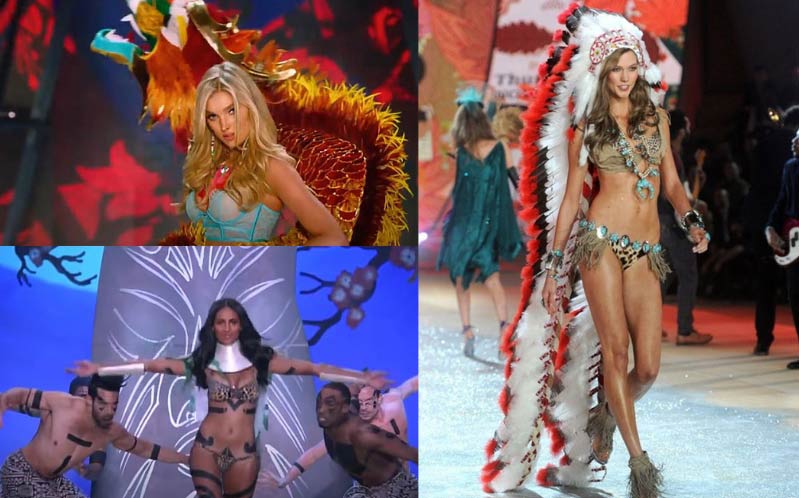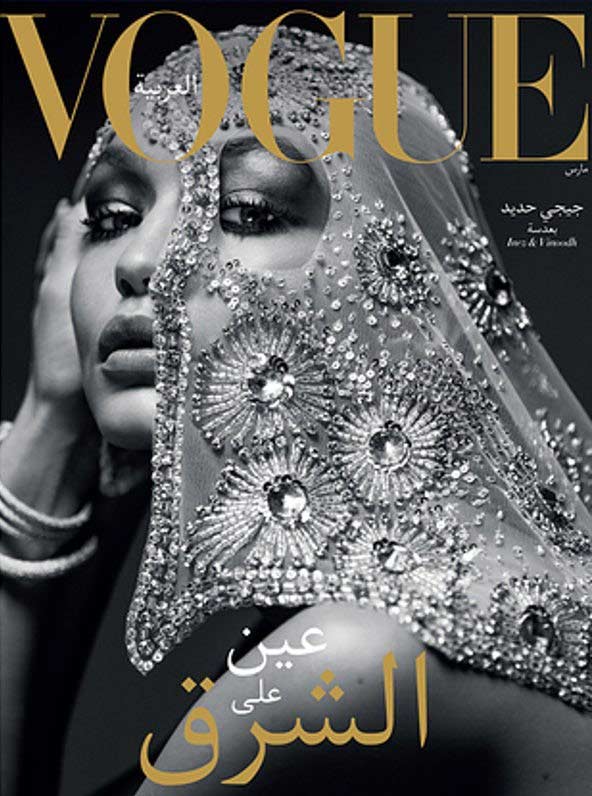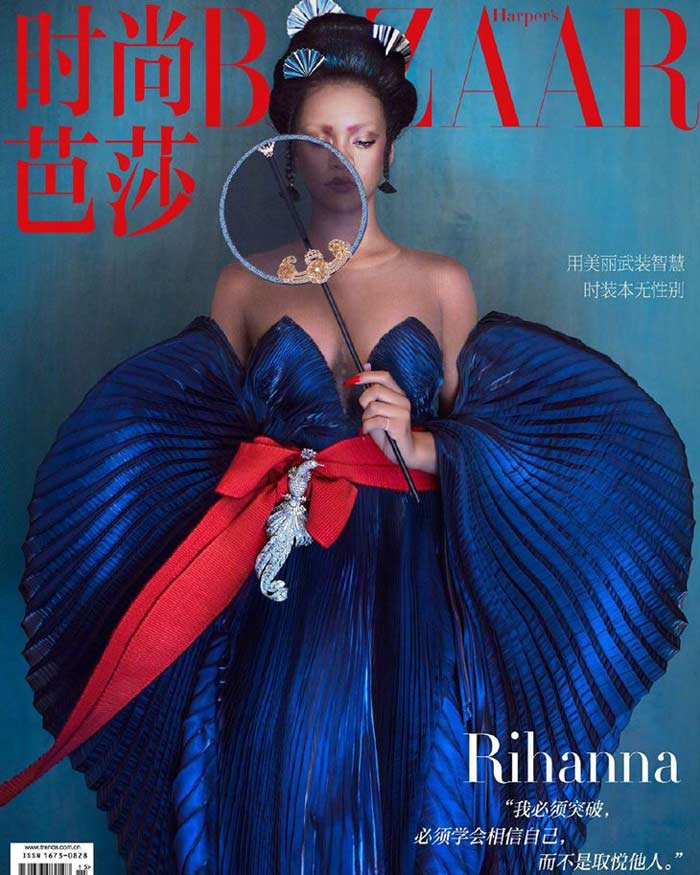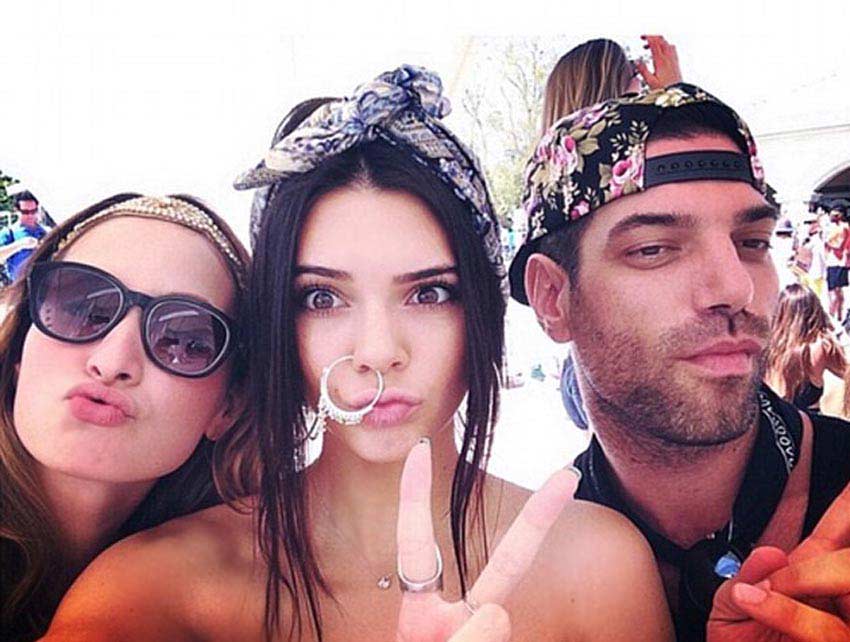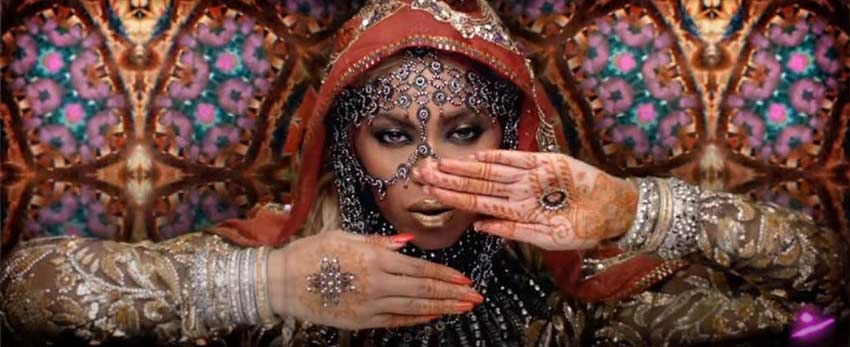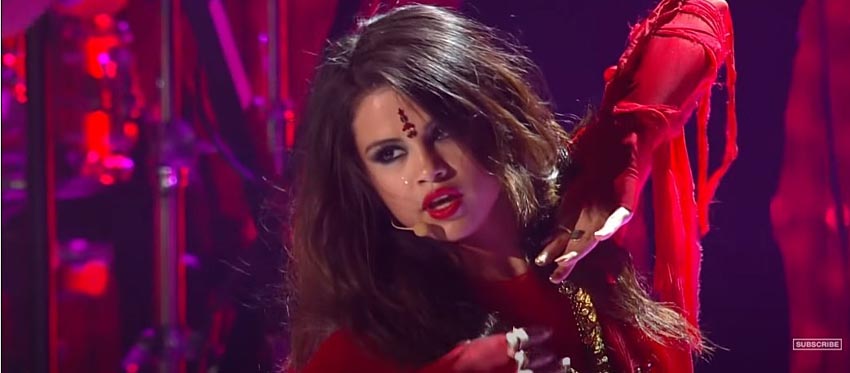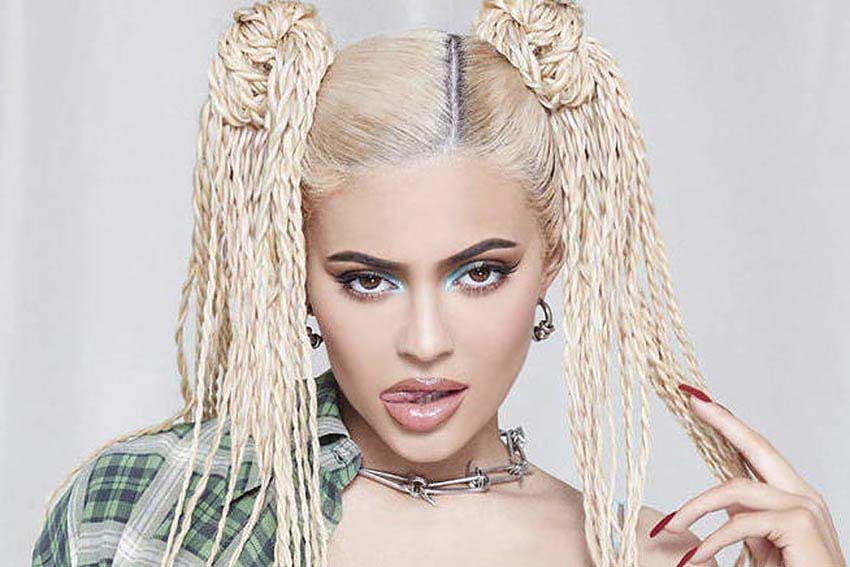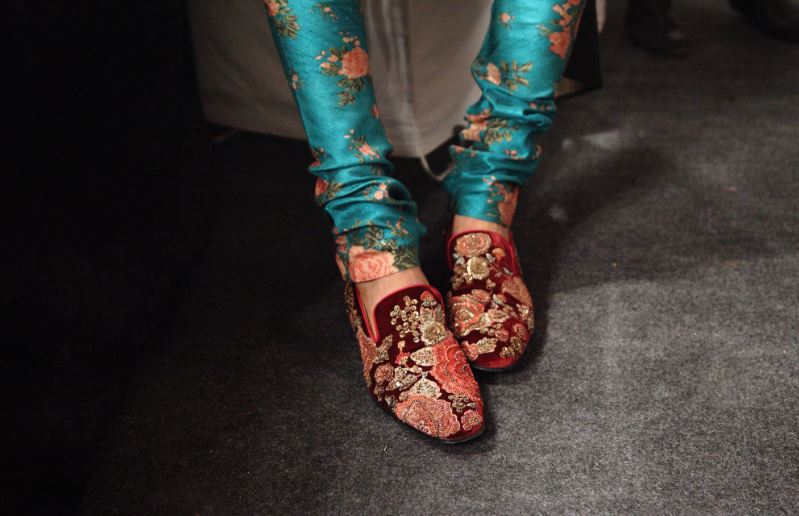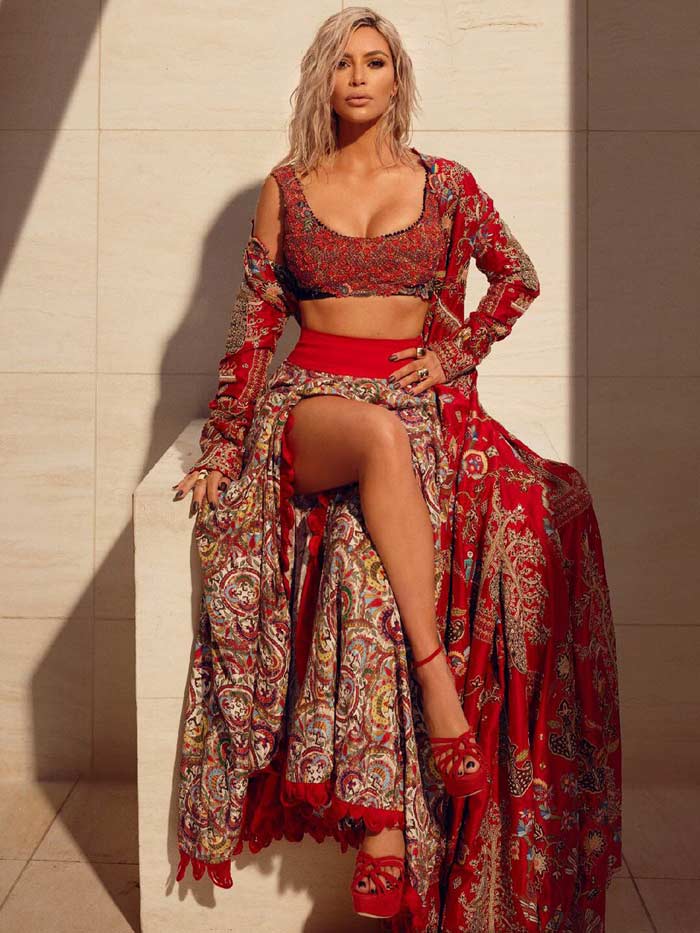ca examples in fashion что это значит
What high fashion is doing about cultural appropriation
By Annabel Rackham
Newsbeat reporter
Just three examples of insensitivity and perceived cultural appropriation that have been criticised in high fashion over the last few years.
When Dolce & Gabbana faced backlash after posting videos of a Chinese model trying to eat pasta and pizza with chopsticks as part of its Shanghai campaign, its co-founder Domenico Dolce promised to do better.
Gucci said it would turn its blackface jumper incident last year «into a powerful learning moment for the Gucci team».
And while Comme Des GarГ§ons’ hair stylist Julien d’Ys has apologised and said it was «never my intention to hurt or offend anyone» after showing white models with cornrows, the incident is the latest talking point in the fashion industry.
‘They did the research’
Maria Grazia Chiuri was the creative director of the fashion house at the time and received criticism for featuring fewer than ten black models in the show.
But the Italian designer, who is now in charge of Dior, has been perceived as making strides in representing cultures from around the world.
Lauren says its success came down to following a model.
«There wasn’t the same visibility and awareness and dialogue around cultural appropriation years ago, but the internet has made it so much more visible,» Lauren says.
«But I think the industry has really woken up to this and there’s been a real effort at being educated and appointing diversity councils.
«I think there’s now a focus on recruiting for diversity that probably wasn’t there three or four years ago.»
She cites Ralph Lauren as the best at implementing this model as the fashion house has «diversity and inclusion officers at every level of the organisation and within every team».
Since the criticism of its balaclava jumper Gucci has appointed a diversity officer, while Prada has set up an advisory panel co-chaired by director Ava DuVernay after coming under similar fire in recent years.
«Only when you have that perspective can you start to serve customers better and challenge the way you’ve been doing things forever,» she adds.
It’s not just high fashion brands that have hit the wrong tone when it comes to respecting different cultures.
Last year Zara was criticised for drawing freckles on its Chinese models because Asian people typically do not have them and in 2018 H&M had to apologise after an advertising campaign showed a black child in a «coolest monkey in the jungle» hoodie.
7 Fashion brands that have been accused of cultural appropriation, and how they responded
Cultural appropriation in fashion is nothing new. It’s been an ongoing topic of conversation in the industry, and now with the rise of the watchdog culture (cue Diet Prada, EstГ©e Laundry and more), regardless whether you agree or not, they have helped to hold brands accountable for different things, from imitating and plagiarising to cultural insensitivity (remember theВ Dolce & Gabbana saga?)
Every season, designers take to the runway to showcase their latest collection, and they’re no stranger to referencing different religious, faith and culture. But the fine line separating cultural appreciation and appropriation is the recognition and intent behind using said culture, especially when it’s merely to make a fashion statement, and even worse, without even honouring the OG artisans.
Here are all the fashion brands that have been called out for cultural appropriation:
Victoria’s Secret has made headlines over the years for both good and bad reasons, and cultural appropriation is definitely one of the brand’s most controversial issues. In 2016, Adriana Lima, Elsa Hosk and Lais Ribeiro—who are not Chinese by descent—wore Asian-inspired looks that featured a feathered dragon, a qipao-like bolero, and Chinese knot tassels.
And although back in 2012, Karlie Kloss’ feather headdress, suede fringe, turquoise jewellery, and leopard print outfit—meant to represent how indigenous people are linked with Thanksgiving—received huge backlash which prompted the brand to apologise and cut the look from the televised broadcast, in 2017, the brand continued to receive flak for its «Nomadic Adventures» themed section which includes a Native American-inspired dress and a feather war bonnet.
While Marc Jacobs didn’t cause backlash over his designs, it was the models’ hairstyles during the Spring 2017 show that got people talking. An homage to club kids such as Boy George and more, all 52 (predominantly white) models who walked the show were in rainbow wool dreadlocks.
The designer initially responded on his Instagram account, saying: «I respect and am inspired by people and how they look. I don’t see colour or race—I see people. I’m sorry to read that so many people are so narrow-minded. Love is the answer. Appreciation of all and inspiration from anywhere is a beautiful thing. Think about it.» A few days later, he posted an apology «for the lack of sensitivity unintentionally expressed» by his words, and that while he sees ‘colour’, he doesn’t discriminate.
Loewe’s Spring/Summer 2018 collection was also called out for cultural appropriation. Included in the array of prints, were textiles patterns traditionally made by Ecuador’s indigenous craftspeople, that feature two women in white hats. The image was almost identical to those produced by Otavalo weavers, although unfortunately, no credit was mentioned. Not long after Diet Prada posted on their Instagram, creative director Jonathan Anderson left a comment clarifying that to honour their craftsmanship, the blanket and tote are indeed made in Ecuador.
Gucci has faced numerous backlash over its products, and two of the most talked about pieces came from its Autumn/Winter 2018 runway. In February early this year, the brand released a wool balaclava jumper—a black turtleneck sweater that features a mouth cut-out with red panels that look like exaggerated lips. It sparked backlash for its resemblance to blackface caricatures almost immediately. Shortly after, Gucci posted an apology on Twitter and removed the jumper from its site. In the statement, the Italian fashion house mentioned that «we consider diversity to be a fundamental value to be fully upheld, respected, and at the forefront of every decision we make.» The brand also announced that the company would be hiring a global director for diversity and inclusion, as well as five new designers around the world for its Rome office.
Just three months after the saga, the brand is under fire once again after luxury e-retailer Nordstrom listed the Indy Full Turban that was first spotted on Gucci’s AW19 runway on its site. The Sikh Coalition, «a community-based organisation and think tank that defends Sikh civil rights», in particular, tweeted: «The turban is not just an accessory to monetise. It’s a religious article of faith that millions of Sikhs view as sacred. Many find this cultural appropriation inappropriate since those wearing the turban just for fashion will not appreciate its deep religious significance.» The item was subsequently pulled from its site, and they also apologized to the Sikh community.
Burberry also landed itself in hot water during its Autumn/Winter 2019 show for sending a model down the runway with the drawstring of a hoodie tied into a noose hanging from the neck. Aside from the suicide references, the hangman’s noose is also a symbol connected to lynching, and it’s a key hate symbol targeting African-Americans.
It didn’t take too long for the brand released an apology statement and removed the design from the collection. Marco Gobbetti, Burberry’s chief executive, said: «Though the design was inspired by the marine theme that ran throughout the collection, it was insensitive and we made a mistake.» The brand also announced three new diversity inititatives would be added to the company.
During Christmas 2018, Prada released a Pradamalia collection featuring a family of seven creatures. While they are all undeniably cute, there were two designs—Otto and Toto—that didn’t strike the right chord with the public, as they’ve been pointed out for resembling blackface. As the window display also featured the figurines, protestors took to the brand’s storefront in SoHo, New York City over the window display too.
Prada didn’t take too long to respond, changing the windows of its store and apologised in a series of tweets. «Prada Group abhors racist imagery. The Pradamalia fantasy charms composed of elements of the Prada oeuvre. They are imaginary creatures not intended to have any reference to the real world and certainly not blackface.»
What Is Cultural Appropriation Exactly, and How Do I Avoid It?
Here’s how to avoid a cultural faux pas.
The term «cultural appropriation» has been used to describe everything from makeup and hairstyles to tattoos, clothing and even food and wellness practices. The phrase originated in the 1980s in academic discussions of colonialism and the treatment of non-white cultures. From there, it worked its way into the modern lexicon, but decoding what does and does not constitute cultural appropriation can be tricky.
What is the definition of cultural appropriation?
Cultural appropriation, also called cultural misappropriation, occurs when a person from one culture adopts the fashion, iconography, trends or styles from a culture that’s not their own. Some of the most harmful examples of cultural appropriation occur when when the culture being appropriated is one of a historically oppressed group.
What is cultural appropriation vs. cultural appreciation?
The line between what differentiates cultural appropriation from cultural appreciation can be razor-thin, not to mention highly controversial. Some say appropriation doesn’t exist because no culture is completely original and uninfluenced by any other. Others believe creatives like designers and musical artists get a pass because their art is open to discussion and interpretation. The key to practicing appreciation rather than appropriation is to understand the culture you’re borrowing from, including acknowledging its history of oppression and marginalization. It helps to support creators from that culture too, when possible.
How do I avoid cultural appropriation?
One you’ve researched a culture, does that mean you have permission to use it freely? Not exactly. Good intentions don’t automatically absolve us from the harm that cultural appropriation does to marginalized communities. Before you «borrow» from a culture, do a gut check:
If you can safely answer «no» to all of those questions, you will probably be able to avoid cultural appropriation. Still, think of it this way: If you feel the need to ask whether you’re culturally appropriating, it may be safer to avoid the outfit or practice that leads you to ask the question in the first place.
What are some examples of cultural appropriation?
Some Halloween costumes deemed offensive, such as a «gypsy,» Rastafarian or geisha, are considered cultural appropriation because those outfits play into stereotypes that have led to the mistreatment or misunderstanding of a group of people. But they’re far from the only ones. Here are a few more examples of cultural appropriation:
We need to talk about cultural appropriation in fashion
Article share options
Share this on
Send this by
As an Australian of Indian heritage, the debate around cultural appropriation is inherently emotional and personal for me.
Indian, or more broadly South Asian, culture is often one of the first examples that’s used when the polarising topic comes up, and usually it revolves around dress or fashion: Can people who aren’t South Asian wear bindis to music festivals? Can they wear a sari to a dress-up party? Is it OK to get a henna tattoo?
These conversations are important and necessary because they articulate the complex experience of watching select elements of my culture and heritage being plucked out of «the otherness» and effortlessly placed into the «on trend’ category.
At best this feels cringe-worthy and weird, and at worst it’s upsetting — and I’m not the only one who feels this way.
At the heart of these discussions about cultural appropriation and fashion is the desire to answer bigger questions — when is it problematic to adopt customs, practices or ideas from a group of people or culture? And what’s the line between inspiration and evolution, and cultural appropriation?
What’s the difference between cultural appropriation and cultural influence?
Fashion draws its influences and inspiration from everywhere, so this can be tricky to answer.
«Borrowing from other cultures is inherently a part of the creative process,» says Megha Kapoor, stylist and editor of an Australian high fashion publication.
And this doesn’t just apply to fashion.
How to avoid cultural appropriation at Halloween
Don’t dress up in blackface. Ever.
Dr Shameem Black, from the Department of Gender, Media and Cultural studies at the Australian National University, says there has always been different kinds of cultural sharing.
«People borrow practices that aren’t traditional [to them]. That’s a philosophical principle that’s really important,» Dr Black says.
«There’s lots of interchange across what we might think of as cultural boundaries in many parts of the world and historically.»
For Ms Kapoor, fashion is a space where different cultures are celebrated.
«It’s one of the really positive industries in terms of being inclusive of other cultures.»
The history of exploitation makes cultural appropriation more complicated
But Dr Black says that issues can arise when «we see a split between the way a cultural practice is valued and the way people from that culture are valued and treated in a particular society».
Borrowing from other cultures becomes problematic when historical context and cultural sensitivities are ignored.
That’s why Gucci’s turbans, Chanel’s boomerang and the Victoria’s Secret headdress received such strong criticism. All those pieces hold religious or cultural significance to their traditional owners. They also represent cultures that were subjugated and exploited by European colonists, and they’re now being profited off by European and American brands.
Designing pieces inspired by any indigenous culture requires even more sensitivity.
«In the Australian context it’s particularly sensitive. For so long Indigenous Australia was a culture denied, a culture interrupted and therefore not acknowledged,» says Peter Denham, Director of Curatorial and Exhibitions at Museum of Applied Arts and Sciences.
«For someone like Chanel, why couldn’t they have worked with an artist or a maker in Australia?»
Why people can’t keep calm about Taylor Swift’s divisive new song
Taylor Swift’s latest song You Need to Calm Down is positioned as a gay anthem, but is she trivialising LGBTQI issues and reducing the community to a sequin-loving stereotype?
Chanel could have considered taking a leaf out of Jimmy Choo’s book. The well-renowned international shoe designer collaborated with Noongar artist Peter Farmer in 2017 to make two pairs of high heels decorated with Farmer’s designs.
Dr Black says the use of Native American headdresses as fashion or dress-up accessories is equally as tone-deaf.
«There is a feeling that while people may feel interested or willing to take on that cultural practice, it is also in contrast with a very violent and dark history.»
How to avoid cultural appropriation with your fashion choices
Navigating the murky line between appropriation and exchange is a task that comes down to mindfulness and respect.
How do you know if it’s cultural appropriation?
Asking who profits is one way to tell if appropriation has crossed a line.
Another red flag when it comes to the question of cultural appropriation is the lack of authorship, acknowledgement and consultation of the groups that people choose to borrow from.
«You’ve got to get their point of view. You can’t just come from the angle of ‘I think that looks cool, so I’m just going to do it’,» says Ms Kapoor.
Mr Denham says compensation should also be considered.
«For it not to be cultural appropriation, there has to be recognition, respect, reward or recompense. You have to ask yourself which people benefited from this product — did someone receive an income from it?»
This failure to consult, collaborate and at the very least consider cultural context means that designers and individuals run the risk of reinforcing damaging stereotypes.
«This has been frustrating for minority communities around dress — when someone is taking styles and putting them on the runway, they’re picking and choosing what they think is representative of that culture,» says Dr Black.
The evolution of hip hop culture from streetwear to high-end fashion is an example of this.
Sneakers and tracksuits used to be synonymous with poorer, black neighbourhoods in the US. But now high-end brands such as Gucci, Balenciaga, Marc Jacobs and Louis Vuitton are all cashing in on what has recently become a fashion trend.
Why’s this a problem? When luxury brands profit off the «coolness» of black culture, while turning a blind eye to the structural injustice and economic inequality faced by black Americans, they run the risk of appearing to be exploitative and insensitive to those communities — a perfect illustration of what Dr Black is describing.
What about cultural exchange instead of cultural appropriation?
But there are positive and constructive ways for people to engage with and borrow from other cultures.
Cultural exchange, instead of appropriation, is something we should encourage.
«The principle of cultural exchange, which involves consultation, collaboration and recognition, is a much more equal way in which it’s not just one person setting the terms,» Dr Black says.
Anna Robertson is the founder of Yevu, an Australian-Ghanaian social fashion enterprise is doing just this.
While Anna is based in Sydney, she employs over 20 people in Ghana who are paid above the living wage. She says there are so many positives to come out of genuinely collaborating with people in Ghana.
«Seeing new female leaders emerge has been one of the best things to come out of starting the business, as well as being part of a really strong team who feel immense pride and ownership of what they’re making,» she says.
Co-branded collaborations are also becoming common in the fashion industry.
Last year Lisa Waup, an Aboriginal Torres Strait Islander artist, worked with fashion designer Ingrid Verner on a collection exploring themes of connection, identity and country.
The product was a collection of garments that referenced Lisa’s print work. She says her culture, history and story was honoured throughout the creative process.
«It was a beautiful way to work together and was a partnership from the start. You’re coming from different worlds in a lot of ways, so it was all about sharing and listening which is really special,» she says.
In a modern, globalised world, it’s only natural that individuals, artists, designers and entire industries would be influenced by cultures different to their own. And this is exactly why identifying appropriation is complex.
It is as much about profit and structural inequality as it is about individuals choosing to wear bindis to a music festival. They’re intertwined.
But appreciating and borrowing from other cultures can be a positive, enriching and unifying — if it’s done in a sensitive, mindful and equitable way.
ABC Everyday in your inbox
Get our newsletter for the best of ABC Everyday each week
Cultural Appropriation in Fashion
There is a fine line between freedom of expression and open disrespect. But who decides it? In this article, we have compiled everything you need to know about cultural appropriation in fashion.
A designer must know the difference between paying respect and exploiting a culture. However, it is surprising to see mainstream designers constantly contributing towards cultural appropriation in the fashion industry.
If you may ask the definition, cultural appropriation in fashion refers to the use of elements of a non-dominant culture in a way that does not respect their original meaning or give credit to their source.
It is not something new but prevailing for decades. For instance, during the 17th century, English and French aristocrats adopted the three-piece suit from the traditional ensemble of Islamic countries. Similarly, English Regency era dandies adapted the Indian churidars into slim-fitting pants.
In 2011, Karl Lagerfeld, the late Creative Director of Chanel created the Paris-Bombay Metiers d’Art collection. Inspiration was taken from the aesthetics of India, saree-esque drapes, anarkalis, and salwar-kameez, sprawled across the runway. In addition, the predominantly white models walked in bindis, naths, maang-tikas, hath-phools, and dreadlocks. However, no one objected to the show. It is not because Chanel did not offend people, but because minority groups did not have a voice back then like they have now. Indeed with the help of social media, minority communities can now express their long-held concerns and feelings.
Chanel’s Metiers d’art Collection 2011
Cultural Appropriation in Fashion Shows
Each fashion week, the legacy of luxury giants adopting minorities’ culture resurfaces. We have compiled a list of designers that frequently seem to feature appropriated culture in their collections.
1. Marc Jacobs
Backstage at Marc Jacobs SS17
When it comes to Marc Jacobs, cultural appropriation in fashion shows is nothing new. He is constantly under the spotlight for his serious affair with appropriating cultures. The Spring/Summer 2017 show featured mainly white models like Karlie Kloss, Gigi and Bella Hadid, Kendall Jenner swarmed across the runway in faux dreadlocks hairdo. Most likely, Marc was unaware that black women get fired from jobs and discriminated against at work for wearing their ethnic styles, including dreadlocks. It caused havoc on the internet as the upset communities called out the designer for using their lifestyle as a trend.
Gigi and Bella Hadid backstage at Marc Jacobs SS2018
Not even a year later, the designer made another blunder at his Spring/Summer 2018 show. This time it was the head wraps, again, on white models. Viewers were quick to call him out, as the hairstylist for the collection cited the 70s as the inspiration but made no reference to the head wrap’s origins. To clarify, head wraps have served as a uniform for the collective identity of millions of enslaved women.
2. Gucci
Gucci’s Indy Turban at Milan Fashion Week
Certainly, it was easy for Gucci to put Indy Turbans on the ramp and sell them as a hat. However, many Sikh men and women around the world face violence and mistrust for wearing them.
3. Victoria’s Secret
Next, where do we even begin with Victoria’s Secret? The grand fashion show featuring angel wings, bedazzled lingerie with no plus-size representation, often engages in cultural appropriation that leaves us shaking our heads in dismay.
(Clockwise) Karlie Kloss in a Native American headdress 2012, Emanuela De Paulo in indigenous body art 2010, Elsa Hosk with a Chinese dragon around her waist 2016.
2010: Wild Things
During their show in 2010, models donned animal print lingerie surrounded by men in sarongs and skirts. All the models both male, and female, were covered with black lines and other patterns. By the way, it was supposed to represent indigenous body art.
2012: Calendar Girls
Similarly, during the 2012 show, angels walked the ramp to represent a month of the year and a holiday associated with it. Karlie Kloss walked down the runway wearing a feather headpiece with suede fringe, leopard-print lingerie for November to represent Thanksgiving. Hurt communities expressed their anger and called out Victoria’s Secret for glorifying the genocide that indigenous people suffered.
2016: Road Ahead
Again in their Road Ahead segment of the 2016 show, designers drew inspiration from traditional Chinese prints to create flowy capes, thigh-high boots, oversized jackets, traditional jewelry, headdresses, and halter-neck crop tops. Chinese viewers took their anger to social media. They bashed the show for using traditional prints in making lingerie. Also, using a fully feathered dragon that represents good luck, strength, and health in Chinese culture as a prop wrapped around Elsa Hosk’s torso.
Cultural Appropriation in Fashion Magazines
1. Vogue Arabia
Gigi Hadid for Vogue Arabia
In March 2017, Vogue Arabia launched their very first issue featuring a veiled Gigi Hadid. The much-awaited launch provoked cries of cultural appropriation from the audience. They expected a woman more relevant to the Middle East community on the cover. Muslim women across the globe face violence, hate, and discrimination for wearing a hijab. Consequently, fans called out Gigi for using hijab as a mere fashion accessory for the shoot.
2. Harper’s Bazaar China
Rihanna for Harper’s Bazaar China
Singer, songwriter and business mogul Rihanna posed for Harper’s Bazaar China August issue in 2019. She appeared in a vibrant blue gown with pleated, avant-garde sleeves, a hairstyle like that of traditional Chinese style, eyebrows blocked, and lips painted red just at the center. As a result, it garnered mixed reactions from the audience. While some Twitterati accused her of appropriating Chinese culture, others called it an appreciation of culture.
Harper’s Bazaar China shared images from the shoot on their Instagram handle and revealed the concept behind the cover. It was a western-style icon-meets-eastern aesthetic. In this case, it was not cultural appropriation because the entire team behind Harper’s Bazaar China was Chinese and was credited in both Rihanna and Harper bazaar China’s Instagram post.
Cultural Appropriation at Music Festivals
Coachella
Kendall Jenner’s Coachella look 2014
The Coachella Festival is an annual music and arts festival held in California. Festival-goers and celebrities often dress in bindis, feathered headdresses, cornrows, henna tattoos, and war paints for “Coachella lewks” for Instagram likes. For the most part, these looks are drawn from someone else’s culture with no regard for their historical significance.
Cultural Appropriation in Music Videos & Performances
1. Hymn For The Weekend- Coldplay ft. Beyonce
A still from Hymn for the Weekend’s Music Video
British rock band Coldplay’s Hymn for the Weekend music video has now surpassed over one billion views on YouTube. Filmed during the festival of Holi, Chris Martin traveled through the narrow streets of Mumbai in a tuk-tuk. As a result, a handful of people described it as appreciating our culture, many of them accused it of cultural appropriation because of the stereotypical depiction of India as a country of narrow lanes, Sadhus, elephants, and snake-charmers.
Perhaps the band could have immersed themselves in Indian culture and paid homage without dressing Beyoncé in a traditional ensemble. Above all, Queen Bey did not even travel to India for the shoot.
2. Come and Get it- Selena Gomez
Selena Gomez at MTV Movie Awards 2013
In 2013, Selena Gomez performed Come & Get It at MTV Movie Awards. She made her entry in a veil, donning a bindi as an accessory for her performance. In addition to bindi, she also incorporated a little Bollywood dance routine into her choreography. Offended Indian fans expressed their disappointment on the internet. Indeed, bindi is not to be casually adorned for indecent performances or as a fashion accessory.
Cultural Appropriation in Fashion by Celebrities
1. Kylie Jenner
Kylie Jenner received backlash for styling her hair in twists
The youngest sibling of the Kardashian-Jenner “Klan” has always been in the news for various reasons. Last year, Twitter users accused Kylie of cultural appropriation. She posted a picture from an old photo shoot where her platinum blonde hair was styled in twists (a protective style in the African-American culture). Eventually, Kylie deleted it from her Instagram after receiving backlash.
2. Kim Kardashian
Image shared by Kim Kardashian on Instagram
Recently, Kim Kardashian posted a few pictures from her latest campaign for her brand KKW-Beauty. Fans accused her of misappropriating religious symbols by sporting Om earrings. Users took their anger to Twitter and explained that Hinduism is not an aesthetic. In the meantime, it isn’t the first time users accused her of appropriating Indian culture. In 2019, Kim shared a picture where she styled a maang-tika (traditionally worn by brides) with a crop top and a skirt.
How to Do it Right?
Even though it is a simple notion to grasp, many people still believe that the ability to express themselves in henna stickers and Amazon-bought bindis is more essential than considering the culture they are stealing. We can avoid cultural appropriation in fashion if designers and celebrities embrace the history behind their inspiration. Also, they must work with the artists from the said community and give them due credit. For instance, take a peek at a couple of cultural appreciation moments captured in the fashion industry.
1. Christian Louboutin x Sabyasachi
Christian Louboutin x Sabyasachi Collection 2017
In 2017, Sabyasachi Mukherjee and Christian Louboutin teamed up to create a limited-edition collection of shoes and bags, namely “Candy Store” for men and women. Classic Christian Louboutin styles were reinterpreted and handcrafted in the most exquisite silk fabrics embellished with zardozi from Sabyasachi’s collection. Truly the shoes and bags were each of a kind and made-to-measure.
2. Kim Kardashian West x Vogue India
Kim Kardashian in Anamika Khanna for Vogue
In 2018, Kim Kardashian appeared on the cover of Vogue India and wore various traditional Indian ensembles custom-made by some of the top Indian designers like Anita Dongre, Sabyasachi Mukherjee, Anamika Khanna, and more. Moreover, Anaita Shroff Adajania, Fashion Director for Vogue India, styled each look.
To summarize, it is not difficult to avoid cultural appropriation in fashion. Fashion is all about creativity. Our travels, and foreign experiences always positively impact creativity. But fashion designing is also a responsibility, especially when you have the opportunity to educate your community about another community that has been oppressed in the past.
Therefore, the persistent stealing of cultures means one of two things: either designers and celebrities do not know, or they do not care to know. What is your take on this? Let us know your thoughts by commenting below or tweeting @shilpa1ahuja.




